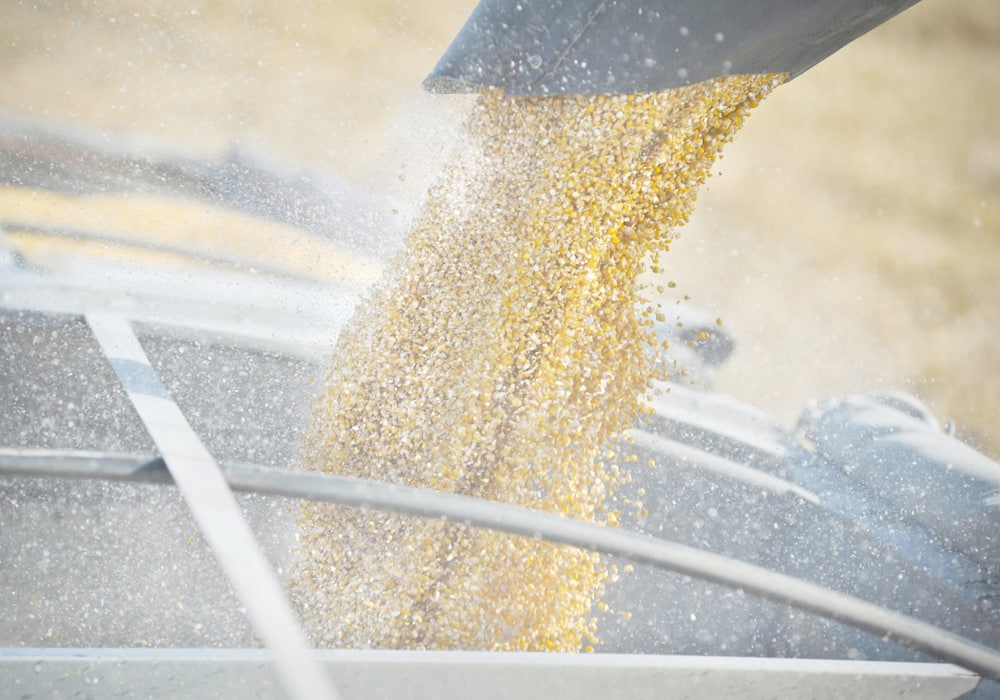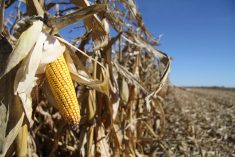SASKATOON — A push to use ethanol to make jet fuel could have a profound impact on feed markets, says an analyst.
“Increasingly there are initiatives that are coming into play that are starting to look at ethanol more seriously as a potential feedstock for sustainable aviation fuel,” Tim Worledge, editorial director of Fastmarkets, said in a recent webinar.
Related stories:
“This could have quite significant consequences for balances of corn around the world.”
Read Also

Fertilizer method’s link to emissions studied
A researcher says others studying greenhouse gas emissions aren’t considering how the loss of nitrogen into the atmosphere correlates with fertilizer application or if there is an impact to yield.
The U.S. National Corn Growers Association is lobbying the U.S. Treasury Department to make corn ethanol an eligible feedstock for the 45Z Clean Fuel Production Credit.
“Corn growers are making every effort to help the airline industry lower its greenhouse gas emissions through the use of corn ethanol,” NCGA president Harold Wolle said in a recent press release.
Outgoing U.S. President Joe Biden’s administration established the Sustainable Aviation Fuel Grand Challenge that set a goal of having 35 billion gallons of SAF production by 2050.
“That’s a huge figure,” said Worledge. “It’s such a big figure that it’s hard for people to really imagine how much volume that is.”
To put it in perspective, the U.S. produces about 15 billion gallons of ethanol per year, which uses more than one-third of the U.S. corn crop.
The U.S. ethanol industry has developed an alcohol-to-jet process that uses an “old school, tried and tested chemical process” to turn ethanol into sustainable aviation fuel.
But according to the preliminary guidance of the regulation, corn ethanol will not qualify for the 45Z tax credit because it does not have a low enough carbon intensity score.
The corn industry is fiercely lobbying for ethanol-friendly changes in the final guidance.
The U.S. is the world’s biggest producer and exporter of corn, so a lot is riding on the success of that lobbying effort.
“If this goes ahead and more corn and more ethanol is pulled into the sustainable aviation fuel mixture, then increasingly we could see the U.S. become less significant as an exporter of corn,” said Worledge.
That would have ramifications for Canada’s barley producers, because U.S. corn is brought in every year as a competing feed ingredient. Canada imported 2.75 million tonnes in 2023-24, 1.89 million tonnes the year before that and a whopping 6.07 million tonnes in 2021-22.
The U.S. isn’t the only jurisdiction where there is a push to use ethanol as SAF feedstock. Brazil recently passed the Fuel of the Future law, which establishes a SAF mandate starting at one percent in 2027 and increasing to 10 percent by 2037.
Ethanol has been approved as a feedstock for that SAF mandate.
The European Union has its ReFuelEU SAF initiative that calls for two percent SAF by 2025 and 70 percent by 2050 on all outbound flights and intra-EU flights.
“That’s a huge figure,” said Worledge.
The EU burns about 65 million tonnes of jet fuel per year. The region is currently producing about 450,000 tonnes of SAF per year, which is mainly being made with vegetable and waste oils.
The EU wants to achieve its SAF goals without relying on any crop-based feedstocks, but that could be a tall order given the volumes involved.
“That’s really where corn starts to come back into this picture,” said Worledge. “We’ve got a huge mountain to climb here.”
Contact sean.pratt@producer.com
















